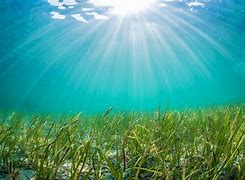
Introduction
When we think of the ocean’s wonders, our minds often drift to coral reefs, majestic whales, and colorful fish darting through crystal-clear waters. However, there’s an unsung hero beneath the waves that plays a crucial role in maintaining the health and balance of our oceans: seagrass. These unassuming underwater meadows might not be as flashy as their coral cousins, but their importance to marine ecosystems and our planet’s well-being cannot be overstated. In this blog post, we’ll explore the fascinating world of seagrass and discover why it deserves our attention and protection.
The Green Carpet of the Ocean
Seagrasses are marine flowering plants that have adapted to life in the underwater world. They grow in shallow coastal areas around the world, forming lush underwater meadows that can rival the beauty of any terrestrial garden. There are approximately 60 known species of seagrasses, with the most common types including eelgrass, turtle grass, and manatee grass.
- Biodiversity Hotspots
Seagrass meadows may not seem like the most glamorous of ecosystems, but they are incredibly biodiverse. These underwater gardens serve as nurseries and hiding places for countless marine species, from small fish and crustaceans to seahorses and juvenile sea turtles. Many commercially important fish species, including snapper and grouper, rely on seagrass meadows during their early life stages. Protecting seagrass habitats means safeguarding the future of our fisheries.
- Carbon Storage and Climate Mitigation
One of seagrasses’ most vital roles is their ability to capture and store carbon dioxide (CO2) from the atmosphere. Seagrass meadows are incredibly efficient at sequestering carbon, even more so than tropical rainforests. As they grow, seagrasses capture CO2 and store it in their biomass and the sediment beneath them, helping to combat climate change.
- Coastal Protection
Seagrass meadows act as natural coastal buffers, reducing the impact of erosion and storm surges. The intricate root systems of seagrasses anchor the sediment in place, preventing it from being washed away by waves. In the face of rising sea levels and increased storm activity due to climate change, seagrass meadows play an increasingly important role in protecting our coastlines.
- Water Quality Improvement
Seagrasses help improve water quality by stabilizing sediments and filtering out pollutants. They trap suspended particles and absorb nutrients like nitrogen and phosphorus, which can otherwise lead to harmful algal blooms and “dead zones” in the ocean. In this way, seagrasses act as natural water purifiers, contributing to cleaner and healthier coastal ecosystems.
Challenges and Conservation
Despite their ecological importance, seagrass meadows face numerous threats. Coastal development, pollution, dredging, and boat anchoring can all damage or destroy seagrass habitats. Additionally, global climate change poses a significant risk, as warming waters and ocean acidification can negatively impact seagrass growth.
Conservation efforts are crucial to protect these vital ecosystems. Local and international organizations are working to raise awareness about seagrass importance and implementing strategies to safeguard their existence. These efforts include:
- Habitat Protection: Establishing marine protected areas and no-anchor zones to limit physical damage to seagrass beds.
- Reducing Pollution: Implementing and enforcing regulations to reduce coastal pollution, which can harm seagrass meadows.
- Restoration Projects: Actively replanting seagrass in areas where it has been damaged or lost.
- Research and Monitoring: Continuously studying seagrass ecosystems to better understand their needs and vulnerabilities.
Conclusion
Seagrasses may be hidden beneath the ocean’s surface, but their significance cannot be overstated. They are essential for marine life, carbon sequestration, coastal protection, and water quality improvement. By recognizing the value of these underwater meadows and taking action to protect them, we can ensure a healthier, more resilient ocean ecosystem for generations to come. So, next time you gaze out at the sea, remember to appreciate the green carpet beneath the waves that quietly sustains our planet.
